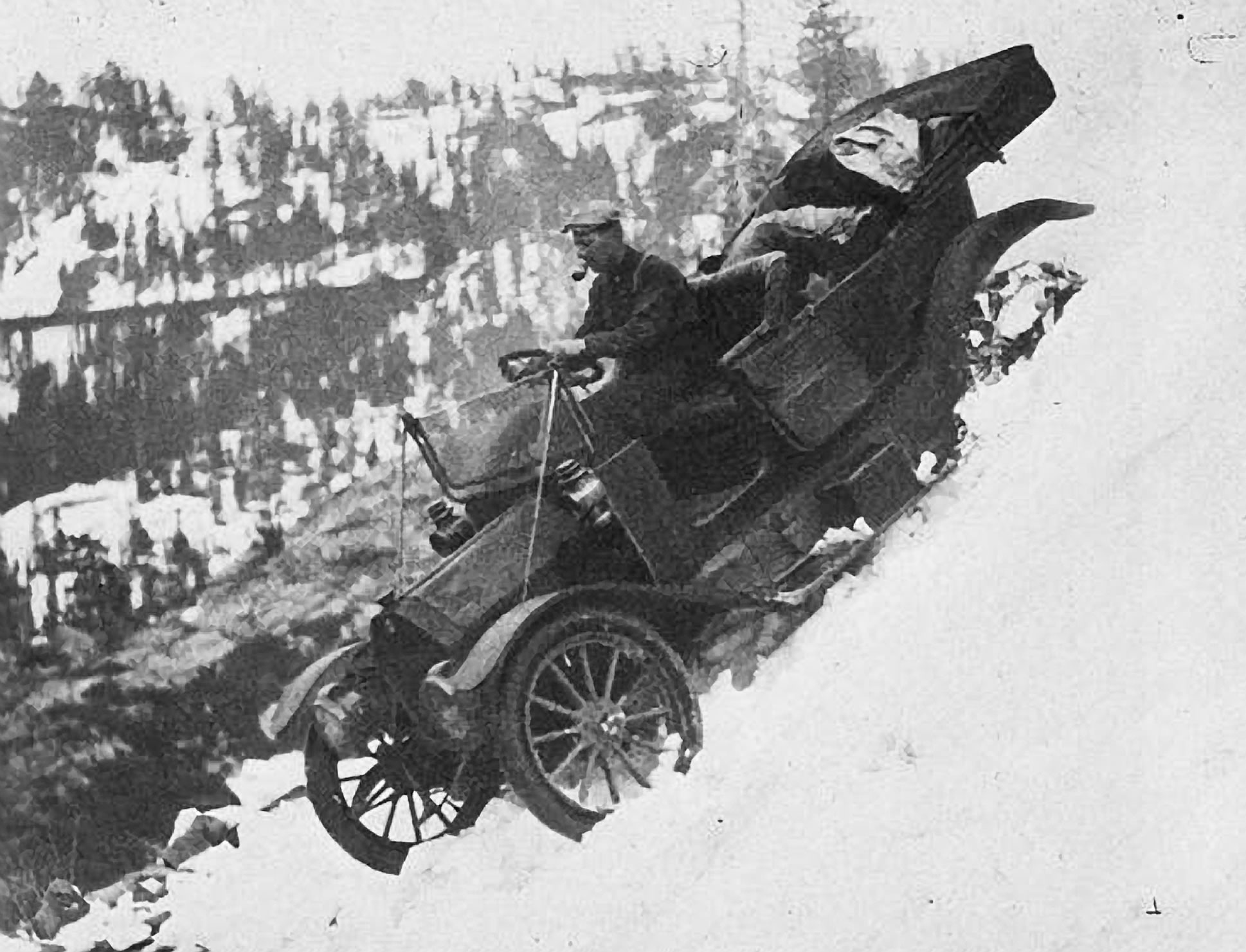The picture here needs some explanation. That’s an auto about 1914 and under it is a snowshed that covered the railroad tracks on Donner Summit. In the distance is Mt. Stephens which sits above today’s Donner Summit or Rainbow Bridge.
It turned out, despite expert opinion*, that snow was a problem on Donner Summit. Even before the railroad was finsihed they were constructing what would eventually be 40 miles of snowsheds to protect tracks and trains.
The wagon and later auto road crossed the tracks and travlers had to not only go across the railroad tracks but also had to travel for a hundred yards or so inside the snowsheds. The hope of course was that no trains were coming.
When autos were new “autoists” wanted to test themselves and their machines. How far could they go? How soon could they get over the Sierra in the spring?
Early spring travelers fought snow, bad roads, and washed out bridges. Sometimes they measured progress by feet instead of miles even when they wrapped their tires in ropes that kind of worked like today’s chains. They’d drive into the snow, back up, fill the crevices in the snow with snow and do it again and again and again.
Apparently it was fun.
Getting to the top of Donner Pass ought to have been a happy time. There was the Summit Hotel, food and rest. It should have been downhill from there to Donner Lake. Early travelers, though, often found the entrance to the snowdheds blocked. The only solutioin was to get on top of the snowsheds and then down to Donner Lake. Here is an auto on top of the snowsheds because the entrance into the sheds was blocked. Maybe this was fun too.
Below is the first auto crossing of the Sierra - 1901

*Theodore Judah, who laid out the transcontinental railroad route, studied the matter by looking at the moss on trees and how high branches had been cut by wood cutters. He thought snow would never get to be more than a few feet deep and could easily be pushed out of the way. Get the full story

